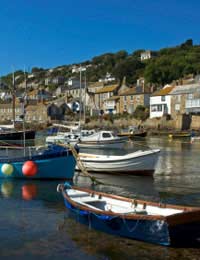Anchoring

A good skipper not only must be able to handle a vessel in full flow, but also keep it in one place when necessary. A good anchor and good anchoring skills are therefore important strings to a sailor’s bow.
A Good Anchor
The key skill of a good anchor is not its gross weight but its ability to lock into the ground. A heavy anchor may drop easily but it takes a lot to raise it back up to the deck. A well designed anchor will grab hold of the earth and instead use the formidable weight of the wet mud and sand to secure the vessel.A good anchor will also need to be strong. Although in a typical situation the strength of an anchor will not be tested because the boat will not pull particularly hard on the line, there are instances, such as when caught in a severe storm or when the anchor gets stuck on a rock, when the strength of the anchor will be critical.
The strength or holding power of an anchor refers to a measure in weight of the amount of pull an anchor can sustain without breaking free. The weight of anchor needed will vary according to the length of the boat and its working load.
Anchor Types
There are a wide variety of anchors available, and which is the most effective for any given craft is dependent on the two main factors of the load placed on the anchor and the type of seabed. The main types of anchor include the Fisherman’s, Danforth, Plough or CQR, Mushroom, Bruce and Grapnel.- Fisherman’s – This is the traditional shank with two arms anchor most people think of when imagining an anchor. It is mostly used by small craft and in places where holding is of key importance, however their weight means they are not popular with recreational craft.
- Danforth – This can be adapted for use with large and small vessels but is particularly popular with small boats because of its strong holding power in sand or soft mud. It is not an ideal anchor for grass, rock or clay beds.
- Plough or CQR – This English anchor is one of the most popular because of its combination of good holding power and stowability. It is perfect for penetrating sand, mud and weed, and hooking rocks.
- Mushroom – This anchor is so named because it looks like an upside-down mushroom. It largely depends on weight for holding power and so is only suitable for boats under 15 feet long in protected water.
- Bruce – The Bruce anchor is a recent design that specialises in holding in sand and rocks and being able to turn 360 degrees without breaking out. It is however not as formidable with soft sand and mud and is awkward to stow.
- Grapnel – Grapnels are not good all round anchors, failing miserably in mud and sand, but instead specialise in grabbing a rocky seabed when a conventional anchor struggles. They are therefore most often used as a handy extra anchor.
Where to Drop Anchor
When choosing where to moor there are several aspects to consider before dropping the anchor.The ideal anchoring location will have a sandy or muddy seabed, as this will provide the best holding ground. Rocks, stones or shingle are not as secure.
Secondly the spot should have as little tidal stream as possible. The stronger the tide, the stronger the anchor and cable will need to work to keep the vessel in the same position.
The depth of water of the anchor spot should allow sufficient chain and rope for four times the depth at high water when using chain only, and six times if chain and rope are used in combination.
When anchoring amongst other boats, it is important to estimate the swinging circle of the craft in relation to the other vessels, bearing in mind that different boats swing to the tide at different times depending on the tide and the direction and strength of the wind.
Essential Tips for Safe Anchoring
- Anchors should be chosen carefully to match the vessel and its purpose.
- The gear that attaches to the anchor to the vessel is as important as the anchor itself.
- To avoid losing an anchor it is essential to make sure it is correctly rigged before being dropped.
- Scope is as critical as anchor design, with the minimum scope being 3:1.
- Anchoring along a beach requires extra caution and precautionary measures.








